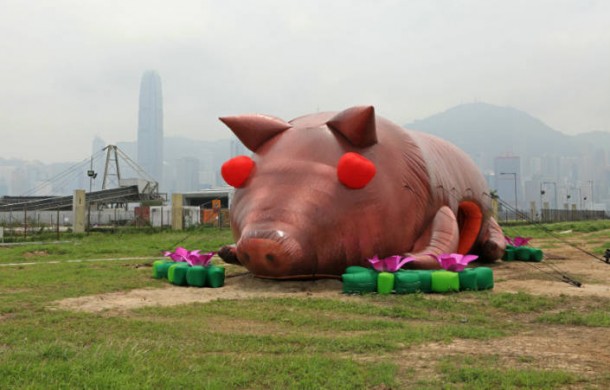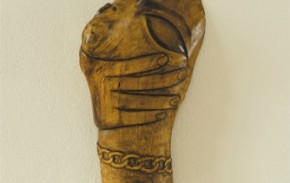[translations idioma=”ES” url=”https://archives.rgnn.org/2013/11/12/m-el-futuro-cultural-de-hong-kong”]
HONG KONG, CHINA. Those who have criticised Hong Kong for its lack of cultural offerings will soon have much less reason to do so. The city is creating an entire district dedicated to culture, the West Kowloon Cultural District.
One of the highlights currently in construction is the M+ Museum of Art and Design, to be opened in 2017. The architectural framework will be provided by Herzog & de Meuron, while the museum itself will house 20th and 21st century art, design, architecture and the moving image from Hong Kong, China, Asia and beyond.
As part of its “Great Museum Collections” series, ROOSTERGNN spoke with Lars Nittve, Executive Director of the M+ Museum, to find out more about this futuristic venture.
What is the mission of the M+ Museum for Visual Culture? How will it add to Hong Kong’s cultural landscape?
Lars Nittve: M+ is the new museum for visual culture in Hong Kong. It encompasses 20th and 21st century art, design, architecture and the moving Image from Hong Kong, China, Asia and beyond. From its vantage point on one of the World’s most dynamic regions, M+ will document the past, inform the present and contribute to the future of visual culture within an even more interconnected global landscape. As such a museum does not exist neither in Hong Kong – nor else where in Asia it is a straightforward addition to the existing, rather sparse landscape.
What will be the highlights (in terms of content) of the M+ Museum for Visual Culture?
At the core of the M+ vision lies the ambition to build a pre-eminent collection of 20th and 21st century vislual culture. The collection will encompass, in varying degrees, visual art, design, architecture and moving image from Hong Kong, China, Asia and the rest of the world. In 202 M+ announced the acquisition by donation of the Sigg Collection, the largest, most comprehensive and important collection of Chinese contemporary art in the world. Following this the curatorial team has acquired some 1000 artworks, design objects and architecture material from Hong Kong, China and beyond.
The M+ Museum for Visual Culture has been given a generous gift from Uli Sigg. What works stand out from this particular collection?
The strength of the M+ Sigg collection is the fact that it is built like a museum collection from the start – representing both the main artists and movements like the Stars Group of the alte 1970’s, the New Wave or Avant Garde of the mid 1980’s up through the global development in the 1990’s and 2000’s including major works by all major artists while at the same time also telling the stories “in between’ representing the fabric that builds an artistic ecology.
What are your goals in terms of temporary exhibitions before the opening in 2017?
The temporary projects under the heading Mobile M+ aims at exploring different possibilities to engage the public in the absence of a building. The Mobile M+ exhibitions as well as the various public talks are envisioned and produced as a way of turning the supposed disadvantage of being “rootless” into an advantage, underlining the importance of not confusing the Museum with the building.
Herzog & de Meuron have been chosen as the architects. How does their design complement the museum’s mission?
It is a design that shows a profound understanding of the vision of M+ – enabling the fluidity between different types of material and genres, being open, generous and welcoming to the public and making a confident visual statement on the waterfront, facing the beautiful Victoria harbor.
You are from Sweden, your chief curator comes from MoMA, you have a Spanish registrar… who else is on the international team?
The curatorial, educational and collection management team consists of roughly 50% staff from Hong Kong, 25% from other parts of Asia (e.g. China, Singapore, Korea) and 25% from the rest of the world. This makes us anchored in Hong Kong but with access to top expertise from anywhere in the world.
Overall, how will the M+ Museum for Visual Culture change the way art is viewed in Asia?
The ambition is, while making use of best international practice, create a museum that reflects an Asian situation both on the “production” side and the audience side. We simply hope we can be a source of inspiration for other museum projects in the region and for learning in the large audience we expect when we open in late 2017.

Tsang Kin-wah (Hong Kong), The Fourth Seal at Mobile M+ Yau Ma Tei, 2012. | M+, West Kowloon Cultural District
***
Lars Nittve, art critic and writer. He is currently the Executive Director of M +, visual culture museum of West Kowloon Cultural District of Hong Kong. During his career he has founded and run other cultural venues such as the Tate Modern in London, the Moderna Museet in Stockholm, and the Contemporary Art Center Rooseum in Malmo, Sweden.

Visit of the M + del Parque in WKCD, next to a tree-lined avenue along the coastline.
| Herzog & de Meuron y WKCDA.




